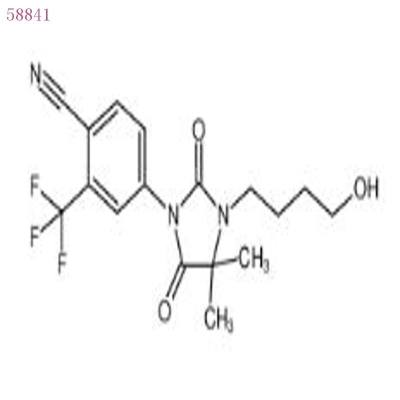-
Categories
-
Pharmaceutical Intermediates
-
Active Pharmaceutical Ingredients
-
Food Additives
- Industrial Coatings
- Agrochemicals
- Dyes and Pigments
- Surfactant
- Flavors and Fragrances
- Chemical Reagents
- Catalyst and Auxiliary
- Natural Products
- Inorganic Chemistry
-
Organic Chemistry
-
Biochemical Engineering
- Analytical Chemistry
-
Cosmetic Ingredient
- Water Treatment Chemical
-
Pharmaceutical Intermediates
Promotion
ECHEMI Mall
Wholesale
Weekly Price
Exhibition
News
-
Trade Service
Food Partners Reuters on ordinary food of function claims identification, currently China only approved in line with GB 28050 standards common foods claiming conditions can make the appropriate function claims
.
Unlike China, Japan allows ordinary foods with scientific basis to be used for function claims
.
In April 2015, Japan began to implement the "Functional Labeling Food System"
.
Before the implementation of the "Functional Labeling Food System", Japan also allowed only individually certified specific health foods and nutritional supplements to carry functional labels
.
The disadvantage of this system is that enterprises need to declare at various levels, and multiple departments jointly review, and the time required for approval is long and difficult
.
Subsequently, the number of approved products is relatively small, and the range of products that consumers can choose is relatively narrow
.
The "Functional Labeling Food System" stipulates that companies are responsible for the safety and effectiveness of their products.
They submit various documents including scientific evidence to the Consumer Affairs Agency 60 days before the sale, and obtain the declaration number to mark the products
.
Foods that can be labeled include processed foods and fresh foods, which include almost all types of foods, except for limited varieties such as health foods and alcoholic beverages that have been functionally labeled
.
The relevant scientific basis for the effectiveness of the functional ingredients to be identified can be obtained through in vivo-in vitro tests
.
It can also refer to the published papers or reports, results of clinical trials and so on
.
Safety can be evaluated by enterprises by analyzing the relevance of edible experience or pharmaceutical ingredients
.
At present, companies can declare through the Consumer Affairs Agency network system, and can also query various data in the functional identification food database, which is very convenient
.
As of October 19, 2021, Japan has 4,591 functionally labeled foods
.
Including 120 kinds of fresh foods such as oranges, bean sprouts, and rice; 2,386 kinds of processed foods in the shape of health care products such as tablets, capsules, and powders; 2085 kinds of ordinary processed foods such as beverages
.
Taking the bean sprouts of fresh food as an example, its function identification is as follows: This product contains soy isoflavones.
According to relevant reports, soy isoflavones have the function of maintaining bone components
.
This product is suitable for middle-aged women who want to maintain healthy bones
.
Another example is the functional identification of the capsule-shaped processed food with sodium hyaluronate as the functional ingredient as follows: This product contains sodium hyaluronate
.
It has been reported that sodium hyaluronate helps the skin retain moisture and has the function of alleviating dry skin
.
The functional identification of the blueberry black vinegar drink with acetic acid as the functional ingredient is as follows: This product contains acetic acid with edible vinegar as the main ingredient
.
It has been reported that acetic acid can reduce visceral fat in obese-prone people
.
This food is suitable for people who care about visceral fat
.
Summary: Japan's adoption of the functional labeling system for ordinary foods not only reduces the burden on enterprises to obtain health food approvals, but also provides consumers with a scientific basis for choosing health foods
.
This article is an original article by the Food Safety Compliance Division of FoodPartner.
com, please contact us for reprinting
.
The Food Safety Compliance Division provides domestic and foreign food standards and regulations management and consulting, food safety information monitoring and analysis and early warning, product registration and filing services, label review and compliance consulting, conference training services, etc.
, for detailed inquiries: 0535-2129301, email : Vip@foodmate.
net
.
Food Partners Reuters on ordinary food of function claims identification, currently China only approved in line with GB 28050 standards common foods claiming conditions can make the appropriate function claims
.
Unlike China, Japan allows ordinary foods with scientific basis to be used for function claims
.
Food Partners Reuters ordinary food Chinese standard In April 2015, Japan began to implement the "Functional Labeling Food System"
.
Before the implementation of the "Functional Labeling Food System", Japan also allowed only individually certified specific health foods and nutritional supplements to carry functional labels
.
The disadvantage of this system is that enterprises need to declare at various levels, and multiple departments jointly review, and the time required for approval is long and difficult
.
Subsequently, the number of approved products is relatively small, and the range of products that consumers can choose is relatively narrow
.
The "Functional Labeling Food System" stipulates that companies are responsible for the safety and effectiveness of their products.
They submit various documents including scientific evidence to the Consumer Affairs Agency 60 days before the sale, and obtain the declaration number to mark the products
.
Foods that can be labeled include processed foods and fresh foods, which include almost all types of foods, except for limited varieties such as health foods and alcoholic beverages that have been functionally labeled
.
The relevant scientific basis for the effectiveness of the functional ingredients to be identified can be obtained through in vivo-in vitro tests
.
It can also refer to the published papers or reports, results of clinical trials and so on
.
Safety can be evaluated by enterprises by analyzing the relevance of edible experience or pharmaceutical ingredients
.
At present, companies can declare through the Consumer Affairs Agency network system, and can also query various data in the functional identification food database, which is very convenient
.
As of October 19, 2021, Japan has 4,591 functionally labeled foods
.
Including 120 kinds of fresh foods such as oranges, bean sprouts, and rice; 2,386 kinds of processed foods in the shape of health care products such as tablets, capsules, and powders; 2085 kinds of ordinary processed foods such as beverages
.
Taking the bean sprouts of fresh food as an example, its function identification is as follows: This product contains soy isoflavones.
According to relevant reports, soy isoflavones have the function of maintaining bone components
.
This product is suitable for middle-aged women who want to maintain healthy bones
.
Another example is the functional identification of the capsule-shaped processed food with sodium hyaluronate as the functional ingredient as follows: This product contains sodium hyaluronate
.
It has been reported that sodium hyaluronate helps the skin retain moisture and has the function of alleviating dry skin
.
The functional identification of the blueberry black vinegar drink with acetic acid as the functional ingredient is as follows: This product contains acetic acid with edible vinegar as the main ingredient
.
It has been reported that acetic acid can reduce visceral fat in obese-prone people
.
This food is suitable for people who care about visceral fat
.
Summary: Japan's adoption of the functional labeling system for ordinary foods not only reduces the burden on enterprises to obtain health food approvals, but also provides consumers with a scientific basis for choosing health foods
.
This article is an original article by the Food Safety Compliance Division of FoodPartner.
com, please contact us for reprinting
.
The Food Safety Compliance Division provides domestic and foreign food standards and regulations management and consulting, food safety information monitoring and analysis and early warning, product registration and filing services, label review and compliance consulting, conference training services, etc.
, for detailed inquiries: 0535-2129301, email : Vip@foodmate.
net
.







